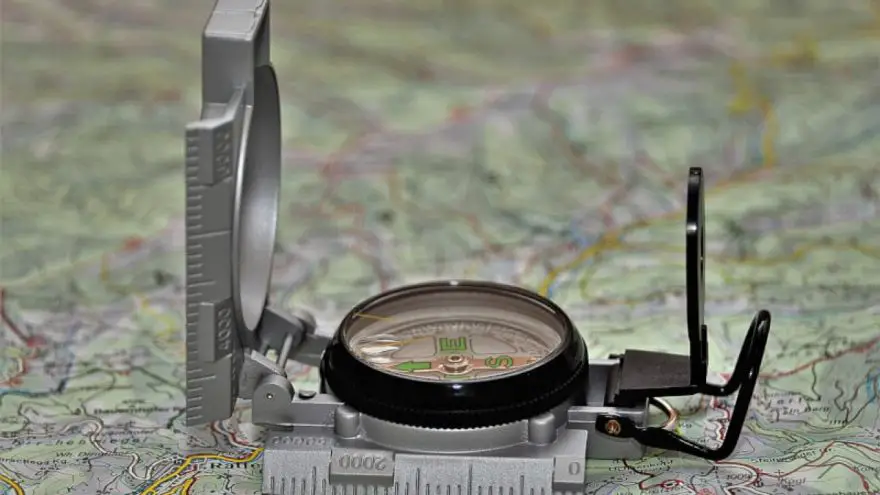Why Map Reading Skills are Still Important
 Why Map Reading Skills are Still Important
gearweare.net
Why Map Reading Skills are Still Important
gearweare.net
Within daily life, the use of paper maps has been almost completely phased out by GPS. The utility of GPS makes it easy to see why this has occurred. Maps take time to interpret, can be quite large and cumbersome, and are dangerous to read while driving. For finding the quickest route down modern roads, GPS just makes more sense. However, even today there remain situations where utilizing a map you can hold is not just preferable, but necessary. Navigating in the backcountry is one.
In the vast expenses of wilderness found across the US, finding a satellite single is never certain, so oftentimes your GPS will be rendered useless. In general phone usage should be limited in the backcountry, because the battery life of electronics becomes a precious commodity, and is best reserved to taking photos, listening to music, and making emergency calls. Maps still just work better in these circumstances. They are more reliable (a maps battery will never die on you), and contain more information of the area you are moving through than most apps.
Trail maps come in two varieties. A simple trail map traces the lines that the trails make through a certain area, but gives very limited information on what the surrounding landscape looks like. If there is a very noticeable feature on the trail, like a horseshoe bend or a bridge, you may be able to locate yourself on this type of map. Overall though, simple trail maps prove inadequate at telling you about where you are or what is around you. For anything more adventurous than a couple hour jaunt across mellow terrain, this style of map will not suffice.
For any other foray into the backcountry, whether it be a day hike or a multi-night excursion, you will want to bring with you a topographical trail map of the area. Before setting out, make sure to take some time studying the map. If read correctly topographical maps can provide you with significant information about the terrain around you, but to the novice eye the seemingly jumbled lines across the map can prove more confusing than informative.
Understanding contour lines are the first step to being able to read your trail map. These lines, which will cover most of a topographical map, represent different elevations. They do not cross, and either create closed loops or run off the side of the page. These lines are directional, typically with higher elevations inside the rings of lower elevations. A contour line that does not have another within it represents the peak of a mountain. Depressions in the landscape look very similar to mountainous terrain, but the concentric lines that denote them have tick marks on the inside.
To interpret the actual elevation gains that contour lines represent, index contour lines and the contour interval are used. Every fifth contour line is an index contour line. The exact elevation is listed at some point along each index contour line, which are easy to find because they are slightly thicker than the others. In turn, the contour interval tells you the distance between each contour line. Contour intervals are usually 40 ft. or 80 ft.
Using these sources of information, you should be able to figure out the elevation of every contour line on your map. For example, if you were given a map with a contour interval of 40 ft. and then asked for the elevations of the contour lines directly above the counter index line at 1520 ft., you would simply subtract and then subsequently add 40 to 1520, to get 1480 ft. as the elevation for the line below, and 1560 ft. as the elevation for the line above.
The distance between contour lines is also important to understanding the terrain on your map. The closer together two lines are, the steeper the elevation gain. Conversely, the further contour lines are from each other, the more gentle the slope will be. Understanding contour intervals, this makes perfect sense. The jump from 1520 ft. to 1560 ft. will not be separated by much horizontal distance on the face of a cliff, while the same elevation gain across an open plain could potentially occur over miles.
The ability to infer what the actual features of a landscape are before you see them is where reading topographic maps becomes the most fun. It is also where it becomes the most useful. When planning a hike, study the contour lines of the area you aim to travel through. Maybe you will notice that the mountain you were planning to climb is particularly steep, and decide to summit the next peak over, whose contour lines denote an easier accent. Or may you notice two circles sitting next to each other, with a trail running between. This can signify a mountain pass, which are typically mellower options for getting through treacherous terrain. Furthermore, if you get lost, you can use the contour lines on your map to figure out where the geologic features around you are on said map, thereby locating yourself. You can then also figure out your latitude and longitude, which is crucial information in the case of an emergency.
There are a few other aspects of topographic maps that need to be understood before using one in the outdoors. The scale of the map is a ratio that tells you how detailed the landscape on your map is. A scale of 1:24,000, means that for every 1 inch on the map, 24,000 inches (or about .38 of a mile) are covered in real life. The coloring of a map can also tell you a lot, and is usually quite easy to interpret. Blue lines and shapes typically signify streams, rivers, ponds, and lakes, while background green and brown colorations represent differences in the density of vegetation. Finally, always spend some time studying the key. Here you will find the meaning of every symbol and line that appears on your map, along with useful information such as the contour interval. In the key you will also find information for calibrating your compass, another essential tool for navigating in the wildness.
The best way to learn to use these maps is through experience. If your new to reading them, spend some time comparing the topographical map of your hometown to how the surrounding landscape appears. These maps can be ordered online, however, area maps are also often available at the local ranger’s office or wilderness gear outfitter.










